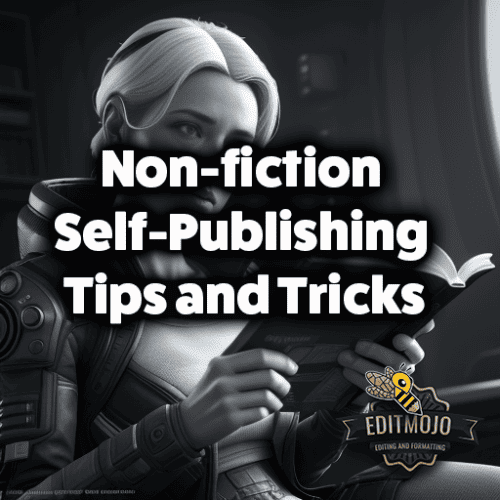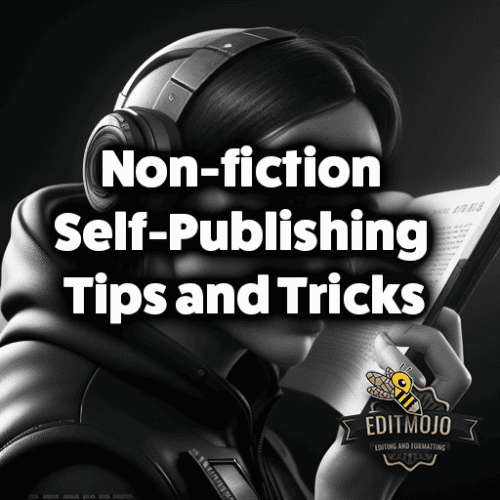Non-fiction Self-Publishing Tips and Tricks
Non-fiction Self-Publishing Tips and Tricks. With the digital revolution reshaping the publishing world, many aspiring writers are turning to self-publishing to bring their works to life. This is especially true for non-fiction authors, who often tackle unique and specialized topics. With the democratization of content creation and distribution, it’s never been easier to share your insights and experiences with the world. This article will offer a wealth of tips and tricks for successful non-fiction self-publishing, drawn from industry best practices, case studies, and personal experience.
Key Takeaways Table
| Section | Key Takeaway |
|---|---|
| Self-Publishing Landscape | Various platforms cater to different needs; choosing the right one can significantly impact success. |
| Developing Your Idea | Identify a unique, interesting topic that resonates with a niche audience for less competition. |
| Crafting Your Book | Structure your book logically, ensure factual accuracy, make complex ideas accessible, and use narratives for engagement. |
| Professionalism | Quality matters: invest in professional editing, proofreading, and book design. |
| Legal Considerations | Understand copyright laws, privacy laws, and the importance of disclaimers in non-fiction. |
| Marketing & Promotion | Create a robust marketing plan, leverage social media, and build an author platform for long-term success. |
| Maximizing Revenue | Consider diverse revenue streams and develop a sound pricing strategy for your book. |
| Case Studies | Study successful self-published authors for insights and strategies to emulate. |
Understanding the Self-Publishing Landscape
When comparing traditional publishing vs. self-publishing, there’s no one-size-fits-all answer. Traditional publishing can offer prestige and wide distribution, but it’s a difficult and often slow process. In contrast, self-publishing gives you full control over your work, from content to cover design to pricing. You can read more about the pros and cons here.

Current Self-Publishing Platforms and Their Features
Choosing the right platform can significantly impact your success as a self-publisher. Each platform has its strengths and unique features.
- Amazon Kindle Direct Publishing (KDP) is the largest and most well-known platform. It offers a large potential audience and robust marketing tools.
- Smashwords supports a wide range of ebook formats and distributes to multiple retailers.
- Draft2Digital stands out for its user-friendly interface and comprehensive distribution network.
- Lulu and IngramSpark are excellent choices for authors interested in both ebooks and print-on-demand physical books.
Another rising trend is audiobook self-publishing platforms, such as ACX, which can help you tap into the growing audiobook market.
Developing Your Non-fiction Idea
Writing non-fiction is about more than just sharing facts. It’s about finding unique and interesting topics that captivate your audience. Market and audience research is crucial here. You want to identify a subject that not only interests you but also resonates with potential readers.
Your book should also differentiate itself in a crowded market. For example, instead of writing a general book on weight loss, you could focus on weight loss for people over 50, or weight loss for those with certain dietary restrictions. Niche topics often have dedicated, interested audiences and face less competition.
Crafting a Compelling Non-fiction Book
Writing a compelling non-fiction book involves structuring your book for impact. Start with a clear and compelling introduction that lays out the value of your book. Each chapter should build on the previous one, developing your argument or sharing your knowledge in a logical and engaging way.
Ensuring factual accuracy and credibility is crucial. Use trusted sources, cite your information properly, and consider having experts review your manuscript for accuracy. Making complex ideas accessible is an art, so write clearly and avoid unnecessary jargon.
While non-fiction may not involve inventing characters or plotlines, storytelling is still key. Narratives can make abstract concepts concrete and memorable, and they can engage your reader’s emotions, making your book more compelling.

Professionalism in Self-Publishing
Successful self-publishing involves more than writing a good book. It requires professionalism at every step of the process.
Professional editing and proofreading** are non-negotiable. Errors and unclear writing can undermine your credibility and reader’s enjoyment. Hiring professionals ensures that your book is polished and professional.
Choosing the right book format and design is also critical. A well-structured book with an appealing, professional layout can significantly enhance readability. Moreover, a compelling, professionally designed book cover is essential—it’s the first thing potential readers see and can make the difference between someone browsing past your book or clicking to learn more.
Legal Considerations for Non-fiction Self-Publishing
Navigating the legal landscape of self-publishing can be tricky. Understanding copyright and intellectual property rights is essential to protect your work and avoid infringing on others’ rights. When using real-life examples and case studies, you must respect privacy laws and obtain any necessary permissions.
Disclaimers can also be crucial in non-fiction, particularly for topics related to health, finance, or legal matters. They protect you and ensure your readers understand that your book does not constitute professional advice.
Marketing and Promotion Strategies for Your Non-fiction Book
Even the best book won’t sell if no one knows it exists. That’s where marketing and promotion come into play.
Developing a pre- and post-launch marketing plan is crucial. This could include building buzz on social media, sending review copies to relevant influencers, setting up a book launch event, and leveraging Amazon’s promotional tools.
Social media and content marketing are powerful tools for promoting your book. Sharing valuable content related to your book’s topic can attract potential readers and build your author platform.
Building an author platform and email list allows you to engage directly with your audience and promote new work. It’s a long-term investment that can pay off big.

Maximizing Your Revenue Streams
Successful self-publishers understand that selling your book is just one potential revenue stream. Exploring other revenue opportunities can significantly boost your income.
Pricing strategies for your non-fiction book can significantly impact your sales and revenue. Pricing too low can devalue your work, while pricing too high can deter potential buyers.
Case Studies: Successful Self-Published Non-fiction Authors
Case studies can offer invaluable insights into the self-publishing process. Take, for instance, Mark Dawson, who turned his passion for writing into a multi-million-dollar self-publishing empire, utilizing Facebook advertising and building an email list. Another example is Nick Loper, who self-published Buy Buttons and successfully leveraged his existing podcast audience to promote his book.
Conclusion (Non-fiction Self-Publishing Tips and Tricks)
Self-publishing your non-fiction book is an exciting journey. Yes, it involves hard work, dedication, and a learning curve. But the rewards—creative control, the potential for financial success, and the satisfaction of sharing your knowledge with the world—make it all worthwhile.
Resources for Further Learning
Continuing to learn and grow is crucial for self-publishing success. Here are a few resources for further learning:
- Self-Publishing School, which offers a range of courses on self-publishing.
- The Creative Penn, a blog and podcast full of valuable self-publishing advice.
- KBoards Writer’s Café, an online community of indie authors who share tips, experiences, and support.
- Self-Publishing Formula, a site that offers courses, podcasts, and a wealth of free resources on self-publishing.
Don’t be afraid to take the leap into self-publishing. It’s a journey filled with opportunity, growth, and the joy of bringing your non-fiction book to life. Happy writing!
Top Five Questions and Answers Table
| Question | Answer |
|---|---|
| What are the popular platforms for non-fiction self-publishing? | Popular platforms include Amazon KDP, Smashwords, Draft2Digital, Lulu, and IngramSpark. Audiobook platforms like ACX are also rising in popularity. |
| How can I make my non-fiction book stand out? | Find a unique angle or niche topic, ensure factual accuracy, write clearly, use compelling narratives, and invest in professional editing and design. |
| What are some legal considerations for non-fiction authors? | Non-fiction authors must understand copyright and intellectual property rights, respect privacy laws when using real-life examples, and use disclaimers appropriately. |
| How should I market my non-fiction book? | Develop a marketing plan, use social media and content marketing, create an author platform, and consider email marketing. |
| Can self-publishing be a significant source of income? | Yes, self-publishing can be a significant source of income, especially when authors utilize multiple revenue streams such as print books, ebooks, audiobooks, courses, speaking engagements, and more. |
Top Ten Resources and Further Reading Table
| Resource | Focus |
|---|---|
| Self-Publishing School | Comprehensive courses on self-publishing. |
| The Creative Penn | Podcast and blog with self-publishing advice. |
| KBoards Writer’s Café | Online community of indie authors. |
| Self-Publishing Formula | Offers courses, podcasts, and free resources on self-publishing. |
| Kindlepreneur | Blog with marketing tips specifically for Kindle authors. |
| Indie Author Alliance | Organization offering resources and networking for independent authors. |
| The Book Designer | Blog focusing on design and production aspects of self-publishing. |
| The Alliance of Independent Authors | Nonprofit professional association for self-publishing authors. |
| Self-Published Author | Resources from Bowker, the official ISBN agency in the U.S. |
